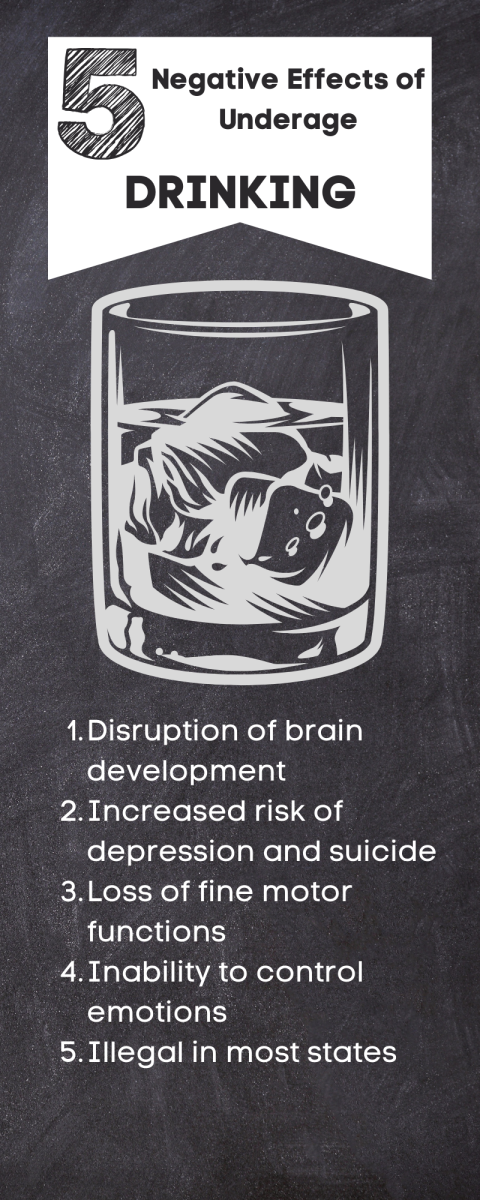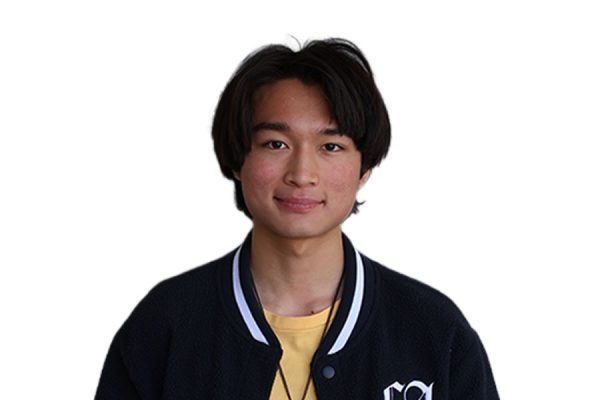Adolescence is a period in time where kids struggle to come to terms with themselves and the world. Questions of fitting in, colleges, and the future fill their minds, but unfortunately for some, the answer lies at the bottom of the glass.
According to the 2022 National Survey on Drug Use and Health, underage alcohol consumption has decreased in recent years. However, the teenage phenomenon remains as nearly six million Americans between the ages of 12 and 20 continue to consume alcohol.
From their experience, teenagers like junior Emmy Donnelly from Irvine High School have observed the adolescent drinking culture through parties, social media, and friends. Though not all parties have alcohol readily available, the ones that do greatly concern Donnelly.
“I know a friend who does drink at parties, and she drinks and does drugs with her boyfriend, but also, she has a risk of being drugged and, obviously, having bad things happen to her, and honestly, I’m worried about her and other people I know who also do that,” Donnelly said.
Donnelly believes the reason why underage drinking remains relevant to this day is mainly because of indirect social pressure. Whether through social media, experimenting peers, or familial influence.
“The culture is based on influence. I would say that people are mainly influenced by what they see the most, like if they hang around parents who consume a lot of alcohol, see it on social media or TV, or have friends who might say, ‘Oh yeah, I was trying alcohol, and it was fun. You should try it with me.’ It really depends on someone’s environment because things impact people in different ways,” Donnelly said.
More importantly, Donnelly reveals that the adolescent drinking culture mainly circles the idea of inclusion and taking part in activities everyone else is doing. Despite no direct pressure to take part in drinking, many often succumb to the fear of being left out and end up drinking alcohol willingly.
“In a way, it makes you feel more included because other people are doing it and having fun, and you want to feel included. Most people want to fit in and do that; most people just do what others do. So if you have friends that go to a party and they start drinking and you see them on your story, you’re going to want to go to that same party and do the same thing,” Donnelly said.
Contrary to popular belief, however, among teenagers, the reason why alcohol consumption has decreased among teenagers is the rise in popularity of other drugs such as vaping and marijuana. According to the National Youth Tobacco Survey in 2023, it reports that roughly more than 6 million adolescents use any form of tobacco product.
“Honestly, I feel alcohol usage has decreased because I feel like most people are moving onto the next new trend like vapes or whatever is popping up,” said Nathaniel Vera, a senior at Carlmont.
Like Donnelly, Vera believes that teenage alcohol consumption, and by extension drug consumption as a whole, is a result of social influence and the desire to fit in. Vera remarks that some even go as far as to craft a different version of their personality to feel even more included.
“I feel that everyone has a persona that they keep up, so they drink or smoke and do all these things to support the identity they created,” Vera said.
Vera expressed that without a social mask to keep up, many would often feel isolated and uncomfortable revealing their true selves when indulging in alcohol. Vera expressed that they would then not have a mental scapegoat to blame and feel excluded as the real version of themselves.
“Some people try and cope with alcohol, and some use it to look cool and fit in, and I feel that a lot of people do the same with other drugs, not just alcohol. You know they don’t want to seem like that one uncool friend while everyone else is smoking and drinking,” Vera said.

Nonetheless, underage alcohol consumption has remained a significant concern for parents and child psychologists alike. Especially when mentioning the myriad of developmental damage alcohol does to a still-growing brain.
“There’s a lot of things that happen with alcohol to the brain, especially in adolescence. Your brain is growing, and development is going on, especially in the prefrontal cortex, all the organizing, decision-making, and impulse control,” said Adriana Santillano, a child and adolescent therapist.
Due to the way alcohol affects the adolescent brain, alcohol can not only stunt psychological development but also blur the already hazy judgment of risk among teenagers.
Through her experiences helping adolescents through their unique problems, Santillano believes that adolescents often feel a sense of invincibility and often don’t see themselves having something bad happen to them.
“I think a lot of times teenagers feel that since they’re older and more mature, they can handle these things, but they are not really considering the risks that come with them,” Santillano said.
Additionally, Santillano stresses that since the vast majority of alcohol exposure carries a positive connotation, the adverse effects of alcohol are out of the spotlight, causing teenagers to take dangerous, unnecessary risks.
“We just don’t think about the consequence that comes with it because we aren’t talking about it unless it happens. There are things that aren’t really talked about, so most believe that they’re not going to happen to them,” Santillano said.
Unfortunately, due to the continued relevance of alcohol among adults for the foreseeable future, Santillano accepts that underage drinking will remain a concerning byproduct. As long as adults continue to consume alcohol, children will follow in their footsteps and drink as well.
“What’s hard is that it’s so socially accepted. That it’s like, oh, one drink at home or for dinner or whatever. But that opens the gates to other things like harder drugs. Most of the time, there is alcohol in the home, and even though kids might not know or their parents don’t drink, the temptation is there, and the access is there,” Santillano said.
Although the temptations and social pressure of underage drinking don’t appear to be disappearing any time soon, there are resources for those who want to seek help for their addictions.
Organizations such as the Substance Abuse and Mental Health Service Administration (SAMHSA) provide valuable help hotlines and information for teenagers struggling to cope. Santillano also expressed that seeking a trusted adult, talking with a sober friend, or seeking confidential professional help are all good steps on the path to recovery.
“Most of the time, teenagers don’t know how to reach out for help because of the fear that like their parents might not believe them or trust them or get angry with them, and so a lot of times I see teenagers hold in a lot of things and it gets to a point where it is too much to handle, and everything goes downhill,” Santillano said.
Though alcohol continues to remain in the lives of some teenagers, there is a pathway to escape not only addiction but the internal social desire to take part in the drinking culture as a whole. The answer is not at the bottom of the glass but in the courage to put it down.
“We want to conform to the things around us. We want to fit in so that people see us as cool or popular. Whatever cool things are,” Donnelly said.




